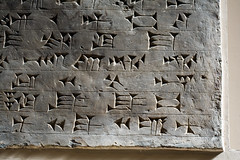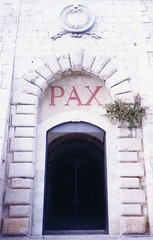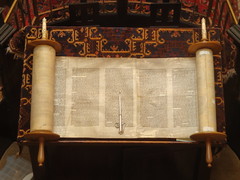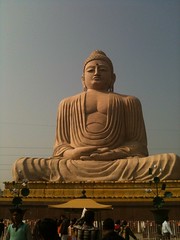| 6703531600 | Amino acids necessary for purine synthesis | Glycine
Aspartate
Glutamine | | 0 |
| 6703551407 | glutamine + CO2 --?--> Carbamoyl phosphate | Carbamoyl phosphate synthetase I
(+): N-acetylglutamine | | 1 |
| 6703558888 | Carbamoyl phosphate + aspartate --?--> orotic acid | dihydroorotate dehydrogenase
blocked by leflunomide | | 2 |
| 6703569000 | orotic acid + PRPP --?--> UMP | UMP synthase
impaired in orotic aciduria | | 3 |
| 6703580944 | Ribose 5-P --?--> PRPP | PRPP synthetase | | 4 |
| 6703582822 | PRPP --X?--> IMP | blocked by 6-MP and its prodrug azathioprine | | 5 |
| 6703592511 | IMP --?--> GMP | inosine monophosphate dehydrogenase
blocked by mycophenolate and ribavirin | | 6 |
| 6703596551 | UDP --?--> dUDP | ribonucleotide reductase
blocked by hydroxyurea | | 7 |
| 6703601925 | dUMP --?--> dTMP | thymidylate synthase
blocked by 5-FU | | 8 |
| 6703607000 | DHF --?--> THF | dihydrofolate reductase
blocked by methotrexate (humans), trimethoprim (bacteria), and pyrimethamine (protozoa) | | 9 |
| 6703618144 | Adenosine deaminase deficiency | required to degrade adenosine and deoxyadenosine
more dATP in lymphocytes = toxic
AR SCID | | 10 |
| 6703623438 | Lesch-Nyhan | absent HGPRT in purine salvage (hypoxanthine --> IMP; guanine --> GMP)
X-linked recessive
Hyperurecemia
Gout
Pissed off (aggression, self-mutilation)
Retardation
Dystonia | | 11 |
| 6703645306 | Frameshift mutation diseases | Duchenne MD
Tay-Sachs | | 12 |
| 6703653198 | Nonhomologous end joining diseases | ataxia telangiectasia
BRCA1 mutation ovarian/breast cancers
Fanconi anemia | | 13 |
| 6703661941 | Amanita phalloides mushroom toxicity | inhibits RNA polymerase II (makes mRNA), causing severe hepatotoxicity | | 14 |
| 6703676899 | Antibodies to spliceosomal snRNPs | anti-Smith
highly specific for SLE | | 15 |
| 6703692816 | Defect in N-acetlyglucosaminyl-1-phosphotranferase | I cell disease
failure of Golgi to phosphorylate mannose residues (decreased mannose-6-P)
coarse facial features, clouded corneas, restricted joints, high plasma levels of lysosomal enzymes, fatal in childhood | | 16 |
| 6703704036 | peroxisome diseases | Zellweger syndrome: hypotonia, seizures, hepatomegaly, early death
Refsum disease: scaly skin, ataxis, cataracts/night blindness, shortening of 4th toe, epiphyseal dysplasia | | 17 |
| 6703720825 | stain for vimentin | mesenchymal tumors (sarcoma), but also others like endometrial, renal cell, meningioma | | 18 |
| 6703726834 | stain for desmin | rhabdomyosarcoma | | 19 |
| 6703729156 | stain for cytokeratin | epithelial tumors (squamous cell) | | 20 |
| 6703734555 | Drugs that act on microtubules | Mebendazole
Griseofulvin
Colchicine
Vincristine/Vinblastine
Paclitaxel | | 21 |
| 6703741864 | examples of microfilaments | actin, microvilli
(muscle contraction; cytokinesis) | | 22 |
| 6703744567 | examples of microtubules | cilia, flagella, mitotic spindle, centrioles
(movement; cell division) | | 23 |
| 6703746709 | examples of intermediate filaments | vimentin, desmin, cytokeratin, lamins, GFAP
(maintain cell structure) | | 24 |
| 6703759458 | Oubain | inhibits Na/K ATPase by binding to the K+ site | | 25 |
| 6703766896 | gene defects in COL1A1 and COL1A2 | Osteogenesis imperfecta
AD
decreased production of type I collagen (problem during glycosalation phase where triple helix is formed)
bone fractures, blue sclera, dental imperfections, hearing loss (BITE) | | 26 |
| 6703792282 | faulty collagen synthesis in proteolytic processing (cleavage) and cross-linking | Ehlers-Danlos syndrome
AD or AR
hyperentensible skin, tendency to bleed, hyper mobile joints; berry and aortic aneurisms, organ rupture
Can be due to problems in type V or III (vascular type) collagen | | 27 |
| 6703810537 | Defective ATP7A causing decreased lysol oxidase | Menkes disease
brittle, kinky hair | | 28 |
| 6703820282 | Cre-lox system | can inducibly manipulate genes at specific development points (gene expression modification)
i.e. to study a gene whose deletion causes embryonic death | | 29 |
| 6703826014 | McCune Albright syndrome | mutation affecting G-protein signaling
1- unilateral cafe-au-lait spots
2- polyostotic fibrous dysplasia
3- endocrinopathy
Lethal if mutation is before fertilization
survivable in patients with mosacism | | 30 |
| 6703841378 | X-linked dominant diseases | hypophosphatemic rickets: increased phosphate wasting at PCT
fragile X syndrome
Alport syndrome | | 31 |
| 6703853110 | CTG expansion of DMPK gene | Myotonic type I MD
myotonia, muscle wasting, cataracts, testicular atrophy, frontal balding, arrhythmia
CTG = cataracts, toupee, gonadal atrophy | | 32 |
| 6703864443 | CGG repeats on FMR1 gene | Fragile X, X-linked dominant
hypermethylation causing decreased expression of FMR1 gene
post-pubertal big testes, long face, large ears, autism, MVP | | 33 |
| 6703878706 | Microdeletion of short arm of chromosome 5 | Cri-du-chat
microcephaly, high pitched cries, epicanthic folds, VSD | | 34 |
| 6703886039 | Microdeletion of long arm of chromosome 7 | William syndrome
deletion includes elastin gene
elf face, intellectual dis., hypercalcemia, overly friendly, cardiovascular issues | | 35 |
| 6703896758 | Velocardiofacial syndrome | palate, facial, and cardiac defects
22q11 deletion distinct from DiGeorge
aberrant development of 3rd and 4th branchial pouches | | 36 |
| 6703911277 | Causes of vitamin B3 deficiency | Hartnup disease (AR, deficiency of neutral amino acid transporters at PCT and gut, like tryptophan, treat with high protein diet + niacin)
carcinoid syndrome (increased tryptophan metabolism)
symptoms include pellagra: diarrhea, dementia, dermatitis | | 37 |
| 6703939714 | Ethanol --?--> acetaldehyde | alcohol dehydrogenase
blocked by fomepizole (antidote for methanol or ethylene glycol) | | 38 |
| 6703949085 | acetaldehyde --?--> acetate | acetaldehyde dehydrogenase
blocked by disulfiram (discourages drinking) | | 39 |
| 6703956420 | RLE of *glycolysis* | Phosphofructokinase-1
(+): AMP, F-2,6-BP
(-): ATP, citrate | | 40 |
| 6703960657 | RLE of *gluconeogenesis* | Fructose-1,6-bisphosphatase
(+): citrate
(-): AMP, fructose-2,6-BP | | 41 |
| 6703963245 | RLE of *TCA cycle* | Isocitrate dehydrogenase
(+): ADP
(-): ATP, NADH | | 42 |
| 6703963246 | RLE of *glycogenesis* | Glycogen synthase
(+): G-6-P, insulin, cortisol
(-): epinephrine, glucagon | | 43 |
| 6703968532 | RLE of *glycogenolysis* | Glycogen phosphorylase
(+): epinephrine, glucagon, AMP
(-): G-6-P, insulin, ATP | | 44 |
| 6703968533 | RLE of *HMP shunt* | Glucose-6-phosphate dehydrogenase
(+): NADP+
(-): NADPH
when deficient: (X-linked recessive) less NADPH is around to protect RBCs from oxidizing agents, causing hemolytic anemia --> heinz bodies (denatured hemoglobin), then bite cells
Due to exposure to oxidizing agents: fava beans, sulfonamides, primaquine, TB drugs, infection | | 45 |
| 6703973024 | RLE of *de novo pyrimidine synthesis* | Carbamoyl phosphate synthetase II
(+): ATP, PRPP
(-): UTP | | 46 |
| 6703973025 | RLE of *de novo purine synthesis* | PRPP amidotransferase
(+): none
(-): AMP, IMP, GMP | | 47 |
| 6703975896 | RLE of *urea cycle* | Carbamoyl phosphate synthetase I
(+): N-acetylglutamate
(-): none | | 48 |
| 6703978001 | RLE of *fatty acid synthesis* | Acetyl-CoA carboxylase
(+): insulin, citrate
(-): glucagon, palmitoyl-CoA | | 49 |
| 6703978002 | RLE of *fatty acid oxidation* | Carnitine acyltransferase I
(+): none
(-): malonyl-CoA | | 50 |
| 6703980550 | RLE of *ketogenesis* | HMG-CoA synthase | | 51 |
| 6703980551 | RLE of *cholesterol synthesis* | HMG-CoA reductase
(+): insulin, thyroxine
(-): glucagon, cholesterol | | 52 |
| 6705011451 | galactose --?--> galactose-1-phosphate | galactokinase
defective in mild galactosemia (AR, galactose builds up in blood and urine, infantile cataracts, may present as failure to track objects or develop a social smile) | | 53 |
| 6705016754 | galactose-1-phosphate --?--> glucose-1-phosphate | galactose-1-phosphate uridyltransferase
defective in severe galactosemia (AR, toxic substances build up including galactitiol in the lens, symptoms start with breast feeding, jaundice, hepatomegaly, infantile cataracts, predispose to E. coli sepsis, exclude galactose and lactose from diet) | | 54 |
| 6705053837 | ribulose-5-phosphate --?--> fructose-6-phosphate | transketolase (thiamine cofactor)
non-oxidative, reversible
can also make ribose-5-P for nucleotide synthesis in HMP shunt | | 55 |
| 6705085134 | fructose-6-phosphate --?--> fructose-1,6-bisphosphonate | phosphofructokinase-1 | | 56 |
| 6705088417 | fructose-1,6-bisphosphonate --?--> fructose-6-phosphate | fructose-1,6-bisphosphonate | | 57 |
| 6705103790 | PEP --?--> pyruvate | pyruvate kinase
(+): fructose-1,6-P
(-): ATP, alanine | | 58 |
| 6705106347 | pyruvate --?--> acetyl-CoA | pyruvate dehydrogenase
puts acetyl-CoA into TCA cycle
actually 3 enzymes that use 5 cofactors (thiamine pyrophosphate (B1), lipid acid, CoA (B5), FAD (B2), NAD (B3))
(+): NAD+/NADH ratio, ADP, Ca2+
deficiency: pyruvate builds up, gets shunted to lactate and alanine = neurological defects
treatment: lysine and leucine in diet (ketogenic nutrients, high fat) | | 59 |
| 6705112324 | pyruvate --?--> oxaloacetate | pyruvate carboxylase (biotin cofactor)
uses ATP
ox. can be used in gluconeogenesis or regenerate TCA cycle | | 60 |
| 6705267845 | pyruvate --?--> lactate | lactic acid dehydrogenase
NADH --> NAD+ (B3)
end of anaerobic glycolysis (done in RBC, WBC, kidney medulla, lens, testes, cornea) | | 61 |
| 6705287444 | pyruvate --?--> alanine | alanine aminotransferase
B6 cofactor
part of cahill cycle, carrying amino groups from muscle to liver | | 62 |
| 6705117115 | oxaloacetate --?--> PEP | PEP carboxykinase | | 63 |
| 6705120676 | isocitrate --?--> a-ketoglutarate | isocitrate dehydrogenase | | 64 |
| 6705126752 | a-ketoglutarate --?--> succinyl-CoA | a-ketoglutarate dehydrogenase (thiamine cofactor) | | 65 |
| 6705144188 | propionyl-CoA --?--> methylmalonyl-CoA | propionyl-CoA carboxylase (biotin cofactor)
propionyl-CoA comes from odd-chain fatty acids, branched-chain amino acids, methionine, and threonine
methylmalonyl-CoA can go on to make succinyl-CoA in TCA cycle with B12 | | 66 |
| 6705165568 | ornithine + carbamoyl phosphate --?--> citrulline | ornithine transcarbamylase
deficiency: X-linked recessive, body cannot eliminate ammonia, excess carbamoyl phosphate is made into orotic acid
elevated orotic acid in blood/urine, decreased BUN, symptoms of hyperammonemia
NO MEGALOBLASTIC ANEMIA (compared to orotic aciduria) | | 67 |
| 6705169061 | fructose --?--> fructose-1-phosphate | fructokinase
defective in essential fructosuria (AR)
benign, fructose in blood/urine | | 68 |
| 6705176284 | arsenic's effect on glycolysis | causes it to produce net zero ATP | | 69 |
| 6705295820 | TCA cycle end products | 3 NADH
1 FADH2
1 GTP
(2 CO2)
= 10 ATP per acetyl-CoA | | 70 |
| 6705308971 | blocks complex I | rotenone | | 71 |
| 6705309020 | blocks complex III | amtimycin A | | 72 |
| 6705311373 | blocks complex IV | CO and cyanide | | 73 |
| 6705315021 | blocks complex V (ATP synthase) | oligomycin | | 74 |
| 6705315022 | uncoupling agents | produces heat by blocking promo gradient. ATP synthesis stops, but electron transport continues
2,4-dimitrophenol
aspirin
thermogenin | | 75 |
| 6705334143 | glucose-6-phosphate --?--> ribulose-5-phosphate | glucose-6-phophate dehydrogenase
makes 2 NADPH from NADP+
oxidative, irreversible
part of HMG shunt | | 76 |
| 6705386567 | fructose-1-P --?--> DAP + glyceraldehyde | Aldolase B
defective in frutose intolerance (AR)
build up of F-1-P depletes phosphate available, inhibiting glycogenolysis and gluconeogenesis
Sx: hypoglycemia, jaundice, cirrhosis, vomiting
treatment: stop eating fructose and sucrose | | 77 |
| 6705422892 | essential amino acids | PVT TIM HALL
phenylalanine, valine, threonine, tryptophan, isoleucine, methionine, histidine, arginine, lysine, leucine | | 78 |
| 6705448610 | citrulline + aspartate --?-->
(urea cycle) | arginosuccinate synthetase (uses ATP)
makes arginosuccinate in urea cycle | | 79 |
| 6705453822 | arginosuccinate --?-->
(urea cycle) | arginosuccinase
makes arginine and fumarate in urea cycle | | 80 |
| 6705460735 | arginine --?-->
(urea cycle) | arginase
makes urea and ornithine in urea cycle | | 81 |
| 6705467935 | Cahill cycle | alanine (NH3) in muscle to the liver
converted to pyruvate, then glucose (via cori cycle) which is sent back to muscle
alanine to pyruvate also used a-ketoglutarate to make glutamate which becomes urea | | 82 |
| 6705488724 | Cori cycle | lactate made in muscle from glucose --> pyruvate --> lactate is moved to liver where it is converted back to glucose (then back to muscle) with help from the cahill cycle | | 83 |
| 6705527519 | (amino acid) --?--> porphyrin --> heme | glycine, uses B6 | | 84 |
| 6705535679 | phenylalanine --?--> tyrosine | phenylalanine hydroxylase (+ BH4)
defective in PKU (AR, either enzyme or tertahydrobiopterin are low, tyrosine becomes essential, excess phenyl ketones in urine (phenyl acetate, phenyl lactate, phenyl pyruvate), growth retardation, fair skin, eczema, musty odor
treat: increase tyrosine in diet, restrict phenylalanine (including aspartame sweetener), BH4 supplementation) | | 85 |
| 6705553049 | tyrosine --?--> DOPA | tyrosine hydroxylase (+ BH4) | | 86 |
| 6705556767 | DOPA --?--> melanin | tyrosinase
defective in albinism | | 87 |
| 6705561503 | DOPA --?--> dopamine | DOPA decarboxylase (+ B6)
blocked by carbidopa (for Parkinson's) | | 88 |
| 6705568520 | dopamine --?--> norepinephrine | dopamine ß-hydroxylase (+ vitamin C) | | 89 |
| 6705574087 | norepinephrine --?--> epinephrine | Phenylethanolamine-N-methyltransferase (+ SAM)
increased by cortisol | | 90 |
| 6705586978 | (tyrosine ->) homogentisic acid --?--> maleylacetoacetic acid (-> fumarate) | homogentisate oxidase
defective in alkaptinuria (AR, pigment forming homogentisic acid builds up in tissue, ochronosis (benign bluing of connective tissue, sclera), urine turns black with air, may have arthralgias | | 91 |
| 6705676271 | homocysteine --?--> cystathione (-> cysteine) | Cystathione synthase (+ serine and B6)
deficiency in (one type of) homocysteinuria (osteoporosis, marfinoid habitus, ocular changes, cardiovascular effects, kyphosis)
treat: B6, cysteine, avoid methionine | | 92 |
| 6705702253 | homocysteine --?--> methionine | methionine synthase (with B12)
deficiency in (one type of) homocyteinuria (osteoporosis, marfinoid habitus, ocular changes, cardiovascular effects, kyphosis)
treat: more methionine in diet | | 93 |
| 6705724896 | Cystinuria | AR defect in renal PCT and intestinal amino acid transporters that prevent reabsorption of cysteine, ornithine, lysine, arginine (COLA)
hexagonal cystine stones precipitate in urine
diagnose with urine cyanide-nitroprusside test
treat: urinary alkalization, chelating agents (penicillamine) increase cystine solubility; hydrate well | | 94 |
| 6705774997 | glucose-6-phosphate --?--> glucose | glucose-6-phosphatase
deficient in Von Gierke disease (I)
severe fasting hypoglycemia, increase in liver glycogen, increase blood lactate, increased triglycerides, increased uric acid (gout), hepatomegaly
treat: frequent oral glucose; avoid fructose and galactose | | 95 |
| 6705801389 | fully branched glycogen --?--> glucose residues | a-1,4-glucosidase
when lysosomal form of enzyme (acid maltase) is deficient: Pompe disease (II)
cardiomegaly, hypotonia, exercise intolerance | | 96 |
| 6705821346 | glycogen with 1 residue limit dextrin --?--> straight chain glycogen | a-1,6-glucosidase (debranching enzyme)
deficient in Cori disease (III)
mild form of Von Gierke, normal blood lactate levels. Gluconeogensis is in tact | | 97 |
| 6705839432 | branched glycogen --?--> limit dextrins of 4 glucose residues | glycogen phosphorylase
when skeletal muscle version of enzyme is defective (myophosphorylase): McArdle disease (V)
glycogen in muscle, but cannot be broken down: painful muscle cramps, myoglobinuria with tough exercise, arrhythmia from electrolyte abnormalities
second wind phenomenon with stop-start exercise because of increased muscular blood flow. blood glucose levels normal | | 98 |
| 6705894161 | decreased branched-chain a-ketoacid dehydrogenase (B1) | Maple syrup urine disease (AR)
blocked degradation of branched amino acids (isoleucine, leucine, valine)
vomiting, CNS defects
treat: restrict these in the diet, give thiamine | | 99 |
| 6705933228 | deficient: Hexosaminidase A | Tay-Sachs disease (AR)
lysosomal storage disease (sphingolipidosis)
accum.: GM2 ganglioside
progressive neurodegeneration, "cherry red spot" on macula, lysosomes wth onion skin, *no* hepatosplenomegaly | | 100 |
| 6705935141 | deficient: a-galactosidase A | Fabry disease (*XR*)
lysosomal storage disease (sphingolipidosis)
accum.: ceramide trihexoside
triad: 1- episodic peripheral neuropathy, 2- angiokeratomas, 3- hypohidrosis
late: renal failure, CVD | | 101 |
| 6705935142 | deficient: arylsulfatase A | Metacromatic leukodystrophy (AR)
lysosomal storage disease (sphingolipidosis)
accum.: cerebroside sulfate
central and peripheral demyelination: ataxia and dementia | | 102 |
| 6705938796 | deficient: galactocerebrosidase | Krabbe disease (AR)
lysosomal storage disease (sphingolipidosis)
accum.: galactocerebroside, psychosine
peripheral neuropathy, destruction of oligodendrocytes, developmental delay, optic atrophy, globoid cells | | 103 |
| 6705942144 | deficient: glucocerebrosidase (ß-glucosidase) | Gaucher disease (AR)
most common lysosomal storage disease (sphingolipidosis)
accum.: glucocerebroside
hepatosplenomegaly, pancytopenia, osteoporosis, avascular necrosis of femoral head, Gaucher cells (lipid laden macrophages that look like tissue paper) | | 104 |
| 6705946516 | deficient: sphingomyelinase | Niemann-Pick disease (AR)
lysosomal storage disease (sphingolipidosis)
accum.: sphingomyelin
progressive neurodegeneration, hepatoplenomegaly, foam cells (lipid laden macrophages), "cherry red" spot on macula | | 105 |
| 6705948331 | deficient: a-L-iduronidase | Hurler syndrome (AR)
mucopolysaccaridosis
accum.: heparan sulfate, dermatan sulfate
developmental delay, gargoylism, airway obstruction, corneal clouding, hepatosplenomegaly | | 106 |
| 6705950716 | deficient: iduronate sulfatase | Hunter syndrome (*XR*)
mucopolysaccaridosis
accum.: heparan sulfate, dermatan sulfate
mild Hurler syndrome without corneal clouding, + aggressive behavior | | 107 |
| 6705992400 | ketone bodies | acetone
acetoacetate (can be detected in urine)
ß-hydrohybutarate (can't be detected in urine) | | 108 |
| 6706022303 | fatty acid synthesis | citrate shuttled from mitochondria into cytoplasm
converted to acetyl-CoA via ATP citrate lyase
acetyl CoA --biotin--> malonyl CoA --> fatty acids | | 109 |
| 6706033853 | fatty acid degradation | fatty acid + CoA --fatty acyl-CoA synthetase--> fatty acyl-CoA (in cytoplasm)
fatty acyl-CoA shuttled into mitochondria via carnitine shuttles (blocked by malonyl CoA)
fatty acyl-CoA undergoes ß-oxidation (acyl-CoA dehydrogenase) into acetyl-CoA, which can be used for TCA cycle or ketone bodies | | 110 |
| 6706056212 | systemic 1˚ carnitine deficiency | defect in transport of long chain fatty acids into the mitochondria
causes weakness, hypotonia, hypoketotic hypoglycemia | | 111 |
| 6706064481 | medium-chain acyl-CoA dehydrogenase deficiency | decreased ability to break down fatty acids into acteyl-CoA
accumulation fo fatty acyl carnitines in the blood
vomiting, lethargy, seizures, coma, death
treat: avoid fasting | | 112 |
| 6708641359 | pancreatic lipase | degradation of dietary triglycerides in the small intestine | | 113 |
| 6708643586 | lipoprotein lipase | degradation triglycerides in chylomicrons and VLDLs
found on vascular endothelial cell surface
defective in hypercylomicronemia (AR) | | 114 |
| 6708654972 | hepatic triglyceride lipase | degradation of triglycerides remaining in IDL | | 115 |
| 6708656690 | hormone-sensitive lipase | degradation of triglycerides stored in adipocytes | | 116 |
| 6708658385 | LCAT | catalyzes esterification of 2/3 of plasma cholesterol
activated by apolipoprotein A-I | | 117 |
| 6708662843 | cholesterol ester transfer protein (CETP) | mediates transfer of cholesterol esters to other lipoprotein particles | | 118 |
| 6708666680 | Apolipoprotein E | Mediates reuptake of everything except LDL
including chylomicron, chylomicron remnant, VLDL, IDL, HDL
defective in dysbetalipoproteinemia (AR) | | 119 |
| 6708671832 | Apolipoprotein C-II | lipoprotein lipase cofactor that catalyzes cleavage
defective in hypercylomicronemia (AR) | | 120 |
| 6708685069 | Apolipoprotein B-48 | mediates chylomicron secretion into lymphatics | | 121 |
| 6708685070 | Apolipoprotein B-100 | Bind LDL receptor | | 122 |
| 6708692217 | Abetalipoproteinemia | AR
absent chylomicrons, VLDL, LDL
deficiency in ApoB48, B100
infants have fat malabsorption, steatorrhea
later may include retinitis pigments, spinocerebellar degeneration due to vitamin E deficiency, ataxia, acanthocytosis
treat: restrict long-chain fatty acids; give large doses of vitamin E | | 123 |
| 6708757438 | Role of chylomicrons | deliver dietary triglycerides to peripheral tissue
deliver cholesterol to liver in the form of chylomicron remnants (depleted of TGs)
secreted by intestinal epithelial cells | | 124 |
| 6708767533 | Role of VLDLs | delivers hepatic TGs to peripheral tissue
secreted by liver | | 125 |
| 6708767534 | Role of IDLs | formed in the degradation of VLDL
delivers TGs and cholesterol to the liver | | 126 |
| 6708767535 | Role of LDLs | delivers hepatic cholesterol to peripheral tissue
formed by hepatic lipase modification of IDL in liver and peripheral tissue
taken up by target cells via receptor-mediated endocytosis | | 127 |
| 6708770302 | Role of HDLs | mediates reverse cholesterol transport from periphery to liver
acts as a repository for apolipoproteins C and E (needed for chylomicron and VLDL metabolism)
secreted from both liver and intestine
alcohol increases synthesis | | 128 |
| 6708774099 | lipoprotein lipase or apolipoprotein C-II deficiency | Hyperchylomicronemia (AR)
blood levels: increased chylomicrons, TG, cholesterol
Sx: pancreatitis, hepatosplenomegaly, pruritic xanthomas
*no* increased risk for atherosclerosis | | 129 |
| 6708774100 | absent or defective LDL receptors | Familial hypercholesterolemia (AD)
blood levels: increased LDL, cholesterol (and VLDL in type IIa)
Sx: accelerated atherosclerosis, tendon (achilles) xanthomas, corneal arcus
Worse in homozygotes | | 130 |
| 6708775718 | defective ApoE | Dysbetalipoproteinemia (AR)
blood levels: increased chylomicrons, VLDL
Sx: premature atherosclerosis, tuberoeruptive xanthomas, xanthoma striatum palmare | | 131 |
| 6708778859 | hepatic overproduction of VLDL | Hypertriglyceridemia (AD)
blood levels: increased VLDL, TG
Sx: can cause acute pancreatitis | | 132 |








































































































































